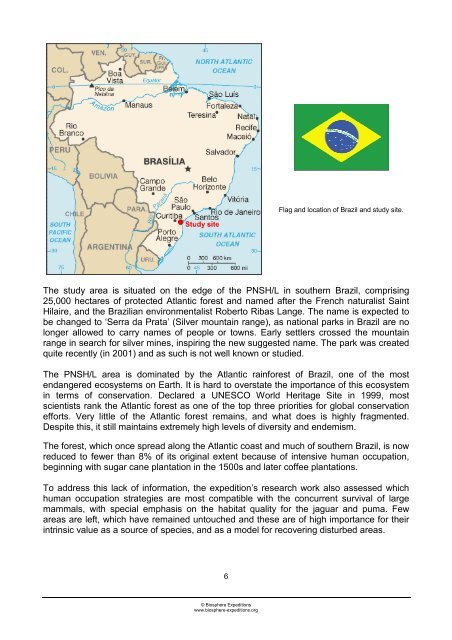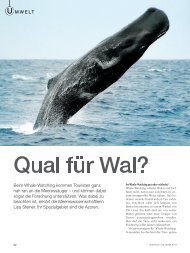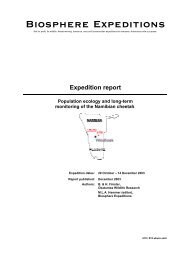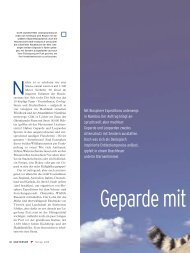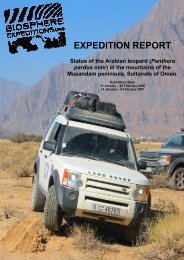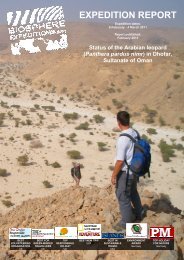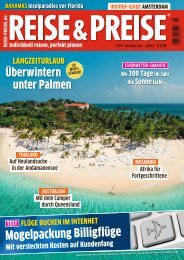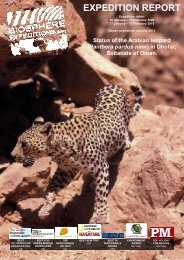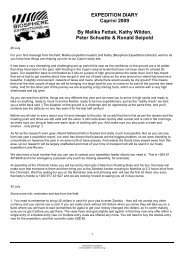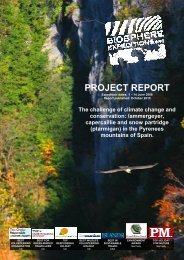EXPEDITION REPORT 2007 - Biosphere Expeditions
EXPEDITION REPORT 2007 - Biosphere Expeditions
EXPEDITION REPORT 2007 - Biosphere Expeditions
Create successful ePaper yourself
Turn your PDF publications into a flip-book with our unique Google optimized e-Paper software.
6<br />
© <strong>Biosphere</strong> <strong>Expeditions</strong><br />
www.biosphere-expeditions.org<br />
Flag and location of Brazil and study site.<br />
The study area is situated on the edge of the PNSH/L in southern Brazil, comprising<br />
25,000 hectares of protected Atlantic forest and named after the French naturalist Saint<br />
Hilaire, and the Brazilian environmentalist Roberto Ribas Lange. The name is expected to<br />
be changed to ‘Serra da Prata’ (Silver mountain range), as national parks in Brazil are no<br />
longer allowed to carry names of people or towns. Early settlers crossed the mountain<br />
range in search for silver mines, inspiring the new suggested name. The park was created<br />
quite recently (in 2001) and as such is not well known or studied.<br />
The PNSH/L area is dominated by the Atlantic rainforest of Brazil, one of the most<br />
endangered ecosystems on Earth. It is hard to overstate the importance of this ecosystem<br />
in terms of conservation. Declared a UNESCO World Heritage Site in 1999, most<br />
scientists rank the Atlantic forest as one of the top three priorities for global conservation<br />
efforts. Very little of the Atlantic forest remains, and what does is highly fragmented.<br />
Despite this, it still maintains extremely high levels of diversity and endemism.<br />
The forest, which once spread along the Atlantic coast and much of southern Brazil, is now<br />
reduced to fewer than 8% of its original extent because of intensive human occupation,<br />
beginning with sugar cane plantation in the 1500s and later coffee plantations.<br />
To address this lack of information, the expedition’s research work also assessed which<br />
human occupation strategies are most compatible with the concurrent survival of large<br />
mammals, with special emphasis on the habitat quality for the jaguar and puma. Few<br />
areas are left, which have remained untouched and these are of high importance for their<br />
intrinsic value as a source of species, and as a model for recovering disturbed areas.


